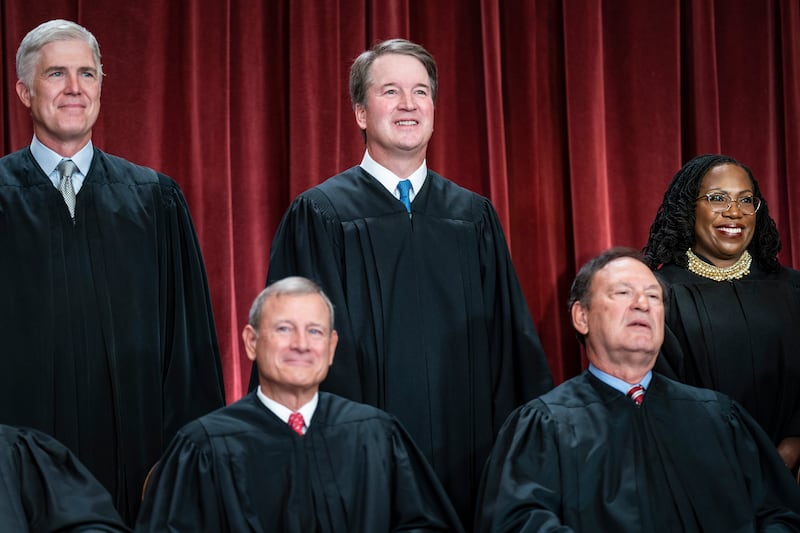Justice Brett Kavanaugh acknowledged that the recent flurry of short, unexplained rulings in the Supreme Court’s “shadow docket” has caused a rift among justices.
The shadow docket refers to Supreme Court decisions made quickly and without full briefing or public explanation, often in emergency or procedural cases. While the rulings are technically temporary, the Trump administration has repeatedly leaned on this process to advance its policy goals swiftly. Critics argue the system lacks transparency.
While speaking to a gathering of judges and lawyers at a conference in Missouri on Thursday, Kavanaugh, a Trump appointee, said justices have differed on whether to elaborate on their decisions in shadow docket rulings.
“I think there are different views among members of the court about when to do it and when not,” Kavanaugh said, according to Politico, adding: “We’re nine independent people.”
Though Kavanaugh was quick to assure the assembled legal minds that “the collegiality of the Supreme Court is very strong” and that “we all look out for each other,” it’s rare for sitting justices not to present a united front on the court’s internal workings.
Kavanaugh later said the court really does deliberate over issues presented in the “shadow docket,” even if the end result may not look like it. He also admitted that the issue of whether a president’s policies can continue while being litigated is “not a trivial question,” according to NBC News.
The former D.C. Circuit Court of Appeals judge added that the lack of elaboration in these decisions is to avoid the impression that the court is making a final determination. That could pose a “danger,” Kavanaugh said, CNN reported.
“There can be a risk in writing the opinion of lock-in effect—of making a snap judgment and putting it in writing, in the written opinion, that is not going to reflect the final view,” he explained.

Among the court’s brief rulings in the shadow docket was one allowing Trump’s layoffs at the Department of Education. That one-paragraph notice offered no specifics as to why.
The court, as of July 10, put on hold lower court rulings to permit Trump’s policies to continue 16 straight times, Georgetown Law Professor Steve Vladeck noted.
Besides gutting the Department of Education, this has given the green light for mass firings of federal workers and employees of independent agencies, such as the Consumer Product Safety Commission. Deportations were also allowed to resume, as well as the president’s directive to ban transgender military members.
Justice Elena Kagan took a different view as to whether the court should justify these decisions.
“Courts are supposed to explain things,” the Obama appointee said this week at a judicial conference in California. “As we have done more and more on this emergency docket there becomes a real responsibility, that I think we didn’t recognize when we first started down this road, to explain things better.”
Also in his talk Thursday, Kavanaugh said he’s well aware of the public’s attitude toward the court—which he described as “an ocean of criticism and critiques.”
“I’m aware of it. I definitely pay attention to it. I think you have to. We’re public officials who serve the American people. It’s not an academic exercise,” he said. “It’s important for maintaining public confidence in the judiciary and the Supreme Court to know how the opinions are being conveyed and received and understood by the American people.”
The Daily Beast has reached out to the White House for comment.
Josephine Harvey contributed to this report.







